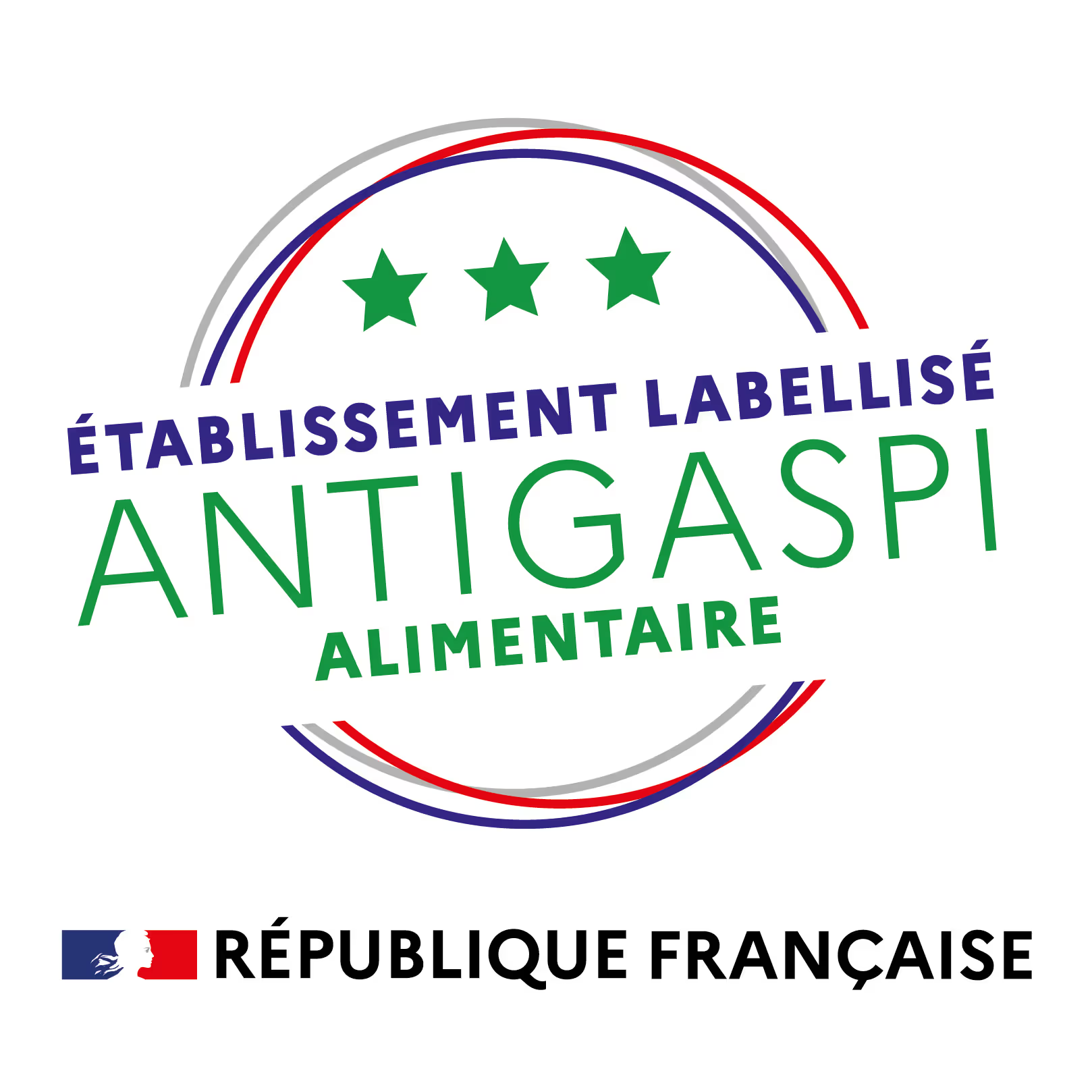The aim of the national anti-food waste label is to reward players in the food chain committed to combating food waste. Supported by the French government, it is part of the anti-waste law for a circular economy, which aims to change our production and consumption model. As a player in the food service industry, you can take action to promote a more sustainable food supply. Find out all about the anti-waste label: origins, criteria and benefits.
Focus on the anti-waste law for a circular economy
According to the French Agency for Ecological Transition (ADEME), over 10 million tonnes of edible food are lost and wasted every year. In mass catering, this represents an average of 120g of food thrown away per guest per meal(data compiled by ADEME on over 1,800 establishments).
To combat waste, the government introduced the February 10, 2020 law on the fight against waste and the circular economy. In particular, it sets national targets for reducing food waste:
- by 50% (compared to its 2015 level) in the retail and foodservice sectors by 2025.
- by 50% (compared to its 2015 level) in the areas of consumption, production, processing and commercial catering by 2030.
A number of measures have already become part of our daily lives, such as the ban on single-use plastic products and the end of disposable crockery for meals eaten on the premises, particularly in fast-food outlets. To further mobilize players in the food chain and encourage more responsible practices, the law has also introduced the anti-food waste label.
👉 To find out more: What are the alternatives to plastic packaging in the catering industry?
What is the anti-waste label?
The aim of this label is to promote players who are committed to the fight against food waste and to sustainable eating. The idea is toimprove practices, while guaranteeing a reduced level of food waste for consumers and professional partners.
From production to consumption, the label applies to all players in the food chain: supermarkets, wholesalers, catering outlets, etc.

How does the national anti-waste label work?
To obtain this label, you need to meet the requirements for all the activities carried out by a facility.
The label is based on 17 criteria, divided into 4 categories:
- cross-functional performance, which evaluates the action plan and analysis of the breakage rate,
- management of food supply, purchasing and production,
- the management of these foodstuffs in the plant,
- unsold goods management, with a focus on donation prioritization and quality.
👉 To find out more: Anti-waste basket: the solution for your restaurant?
What are the three levels of certification: 1, 2 or 3 stars?
Players who meet the label's criteria are awarded a logo with stars, according to their level of commitment to the fight against food waste:
- 1 star - commitment: attests to a commitment to the fight against food waste.
- 2 stars - mastery: attests to mastery of the fight against food waste.
- 3 stars - exemplary: attests to achieving an exemplary level in the fight against food waste.
Certified establishments can now display their stars on their storefronts. The aim is to give greater visibility and credibility to professionals committed to the fight against food waste.
To go further in your commitment, download our free guide by clicking on the banner below 👇

What are the 4 steps to obtaining the anti-food waste label?
According to the Ministry of Ecological Transition, all establishments can apply, either individually or as a group.
1. Applying to an approved organization
Commercial or collective restaurants applying for the label must contact an independent, government-approved body, which will be responsible for carrying out the audit.
To find an approved organization, please contact: label-anti-gaspillage-alimentaire.sdppd.sevs.cgdd@developpement-durable.gouv.fr
Next, the restaurant must complete an application file comprising several documents.
2. Performing the audit
The audit takes place within the restaurant, with documentary checks and interviews with the manager and staff.
3. Certification
Based on the results of the audit, the organization awards the label and the number of stars to the restaurant. The Ministry maintains a public list of certified establishments.
4. Label monitoring and renewal
A follow-up audit is carried out every year, either remotely or on site. As part of a continuous improvement process, a label renewal audit is carried out every 3 years. This means that a restaurant with the anti-gaspi label can gain or lose a star, or even have the label withdrawn in the event of non-compliance.
Get the anti-waste label!
To meet customers' aspirations and adopt more responsible practices, the transition to more sustainable food is essential.
As well as being an ecological nonsense, food waste contributes to climate change and puts considerable pressure on natural resources, ecosystems and biodiversity.
There are many advantages to obtaining the national anti-waste label for your restaurant:
- Reduce food waste and save money on your bottom line.
- Generate a new source of income.
- Reduce waste management costs.
- Improve your brand image.
- Strengthen the bond of trust with your customers and business partners.
Become a committed player in the ecological transition!
-
Did you like these tips? Don't hesitate to consult our other articles on our blog to help you develop your business!
Innovorder is the leader in digital solutions for commercial and institutional foodservice. Our team supports restaurateurs in their digital transformation with an all-in-one solution (cash register, kiosk, online ordering, KDS).







